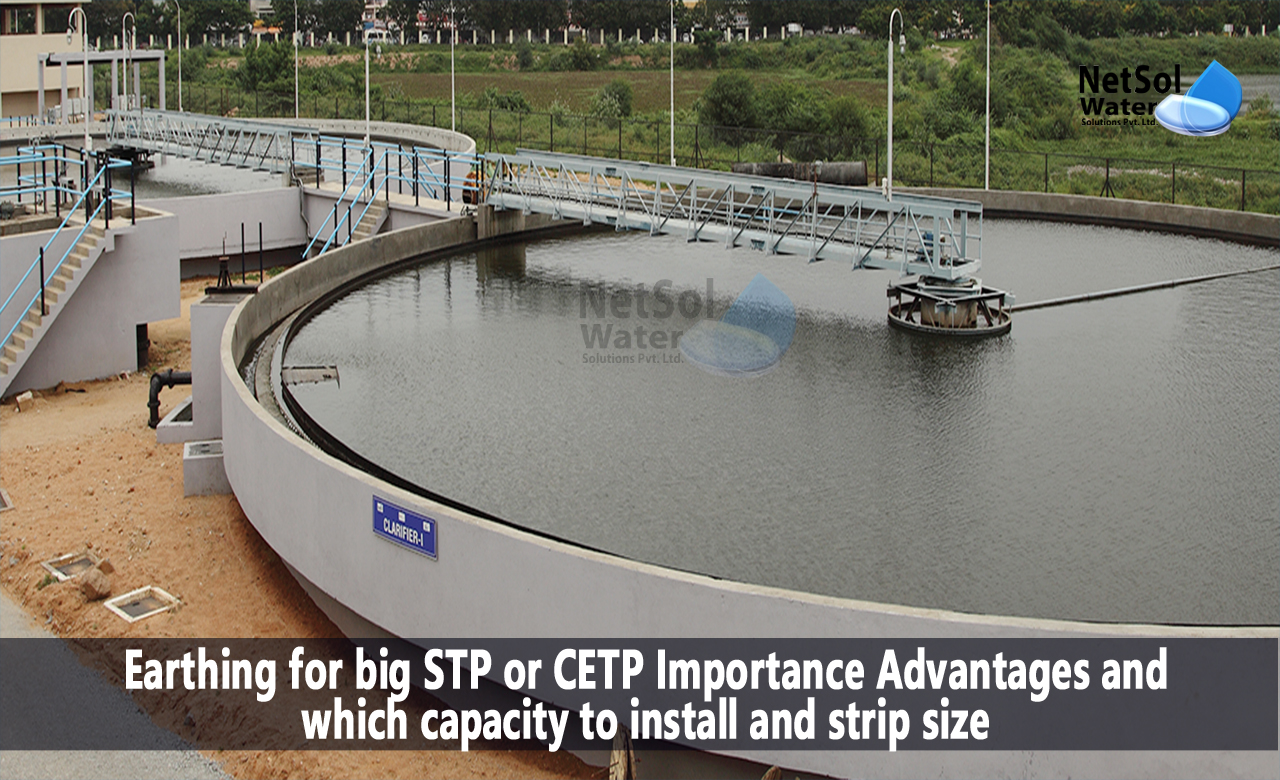Sewage treatment plants (STPs) and combined effluent treatment plants (CETPs) are crucial infrastructures for treating wastewater before discharging it into the environment. These plants use various equipment and instruments that require electrical power to operate, and thus earthing is crucial for ensuring safety and proper functioning of the equipment.
Here we will discuss the importance of earthing in STPs and CETPs, the capacity from which we should start doing earthing, how to select the earthing strip size during installation, and the advantages of earthing installation in sewage treatment plants.
Importance of Earthing in STPs/CETPs
Earthing is the process of connecting the metallic parts of electrical equipment or installations to the earth plate or electrode, which provides a low resistance path for the fault current to flow. In STPs and CETPs, earthing is important for several reasons, including:
· Safety:
Electrical equipment and installations in STPs/CETPs can become live due to various faults or malfunctions. This can pose a severe risk of electric shock to operators and maintenance personnel. Proper earthing ensures that fault currents flow through the earth wire instead of the human body, preventing electric shock incidents.
· Equipment protection:
Electrical equipment and installations can also get damaged due to various types of electrical faults. Proper earthing provides a low resistance path for the fault current to flow, which reduces the voltage across the equipment and prevents damage.
· Lightning protection:
STPs/CETPs are often located in open areas and are vulnerable to lightning strikes. Proper earthing provides a safe discharge path for lightning currents and protects the equipment from damage.
Capacity from which we should start doing earthing
The capacity from which we should start doing earthing depends on the size and nature of the electrical installation. For example, in STPs/CETPs, the earthing system should be designed based on the maximum fault current that can occur in the electrical system. This current depends on various factors, including the size of the plant, the type and rating of electrical equipment, and the voltage of the electrical system. The earthing system should be designed to limit the earth fault current to a safe level, typically less than 500mA.
Selecting the Earthing Strip Size during Installation
The size of the earthing strip or conductor depends on the maximum fault current that can occur in the electrical system and the soil resistivity of the earthing electrode.
The earthing strip size is selected based on the following formula:
Size of earthing strip = √(k × I) / ρ
Where,
k = a constant based on the type of earthing electrode (k = 26.7 for GI electrode)
I = maximum earth fault current
ρ = soil resistivity
Example
Lets take an example, if the maximum earth fault current in an STP/CETP is 500A, and the soil resistivity is 10Ω-m, the size of the earthing strip required would be:
Size of earthing strip = √(26.7 × 500) / 10 = 20.6 mm x 3.25 mm
Advantages of Earthing Installation in Sewage Treatment Plant
· Safety: Proper earthing reduces the risk of electric shock incidents, protecting the operators and maintenance personnel from harm.
· Equipment protection: Earthing protects electrical equipment from damage due to various electrical faults, reducing downtime and maintenance costs.
· Lightning protection: Earthing provides a safe discharge path for lightning currents, protecting the equipment from damage.
· Improved reliability: Proper earthing ensures proper functioning of electrical equipment and installations, improving the reliability of the plant.
Summary:
Thus proper earthing is crucial for ensuring the safety and proper functioning of electrical equipment and installations in sewage treatment plants. Earthing protects equipment from damage due to various electrical faults and lightning strikes, reduces the risk of electric shock incidents, and improves the reliability of the plant. The size of the earthing strip should be selected based on the maximum fault current that can occur in the electrical system and the soil resistivity of the earthing electrode. Designing and installing an efficient earthing system is a critical aspect of constructing a big sewage treatment plant or combined effluent treatment plant.
Leading manufacturer of sewage treatment plants in India.
Netsol Water is the leading manufacturer, supplier, and exporter of a quality selection of water treatment, and wastewater treatment products in India, by using advanced sewage treatment methods.
RO plants, water softeners, ETPs, STPs, DM plants, AMC, O&M, Ultra filtration, UV, Ozonation, ZLD plants, Anoxic tanks, and other goods and services are available from us. We also provide services to businesses in sectors including automotive, pharmaceutical, textile, pulp & paper, beverages, refineries, schools, hospitals, office buildings, and hotels, among others.
Call us at +91 9650608473 or email at enquiry@netsolwater.com for further information.



